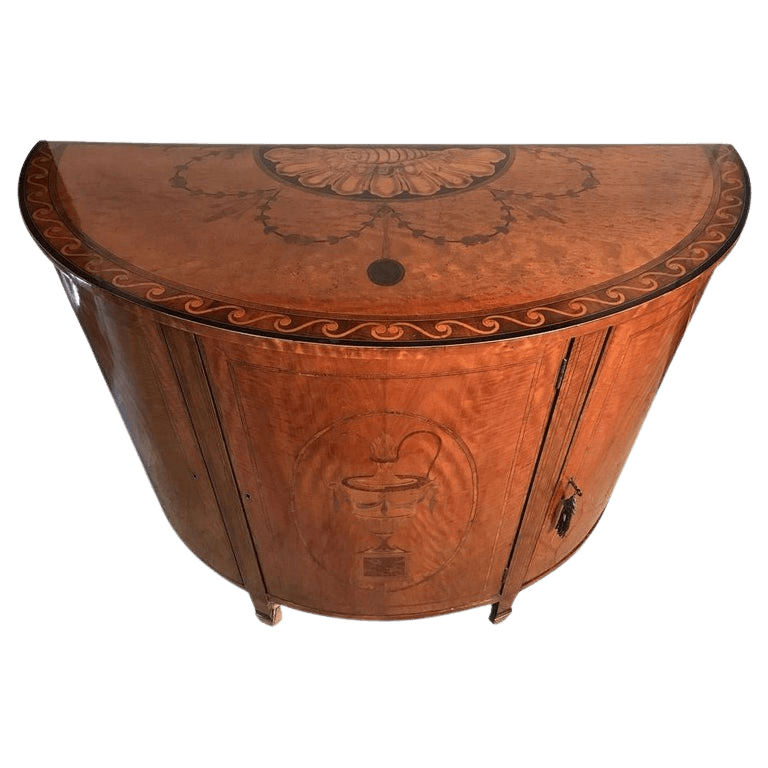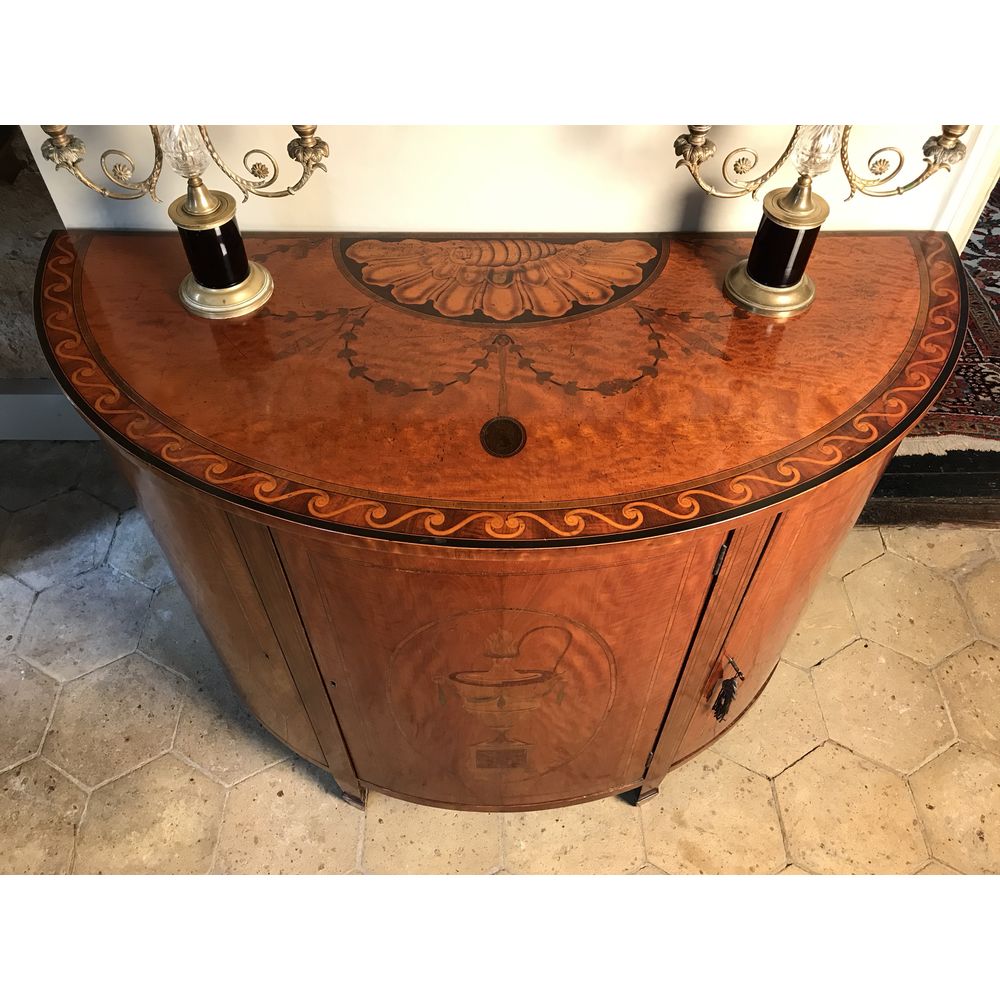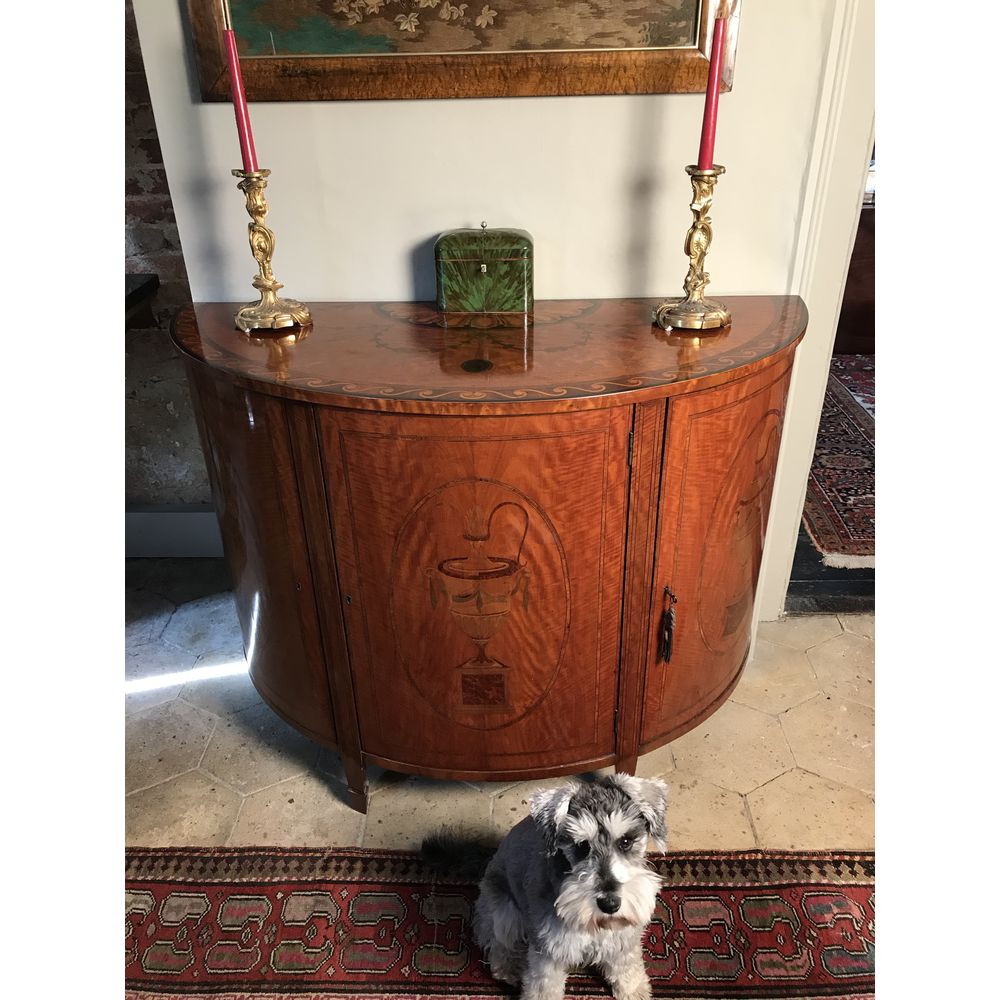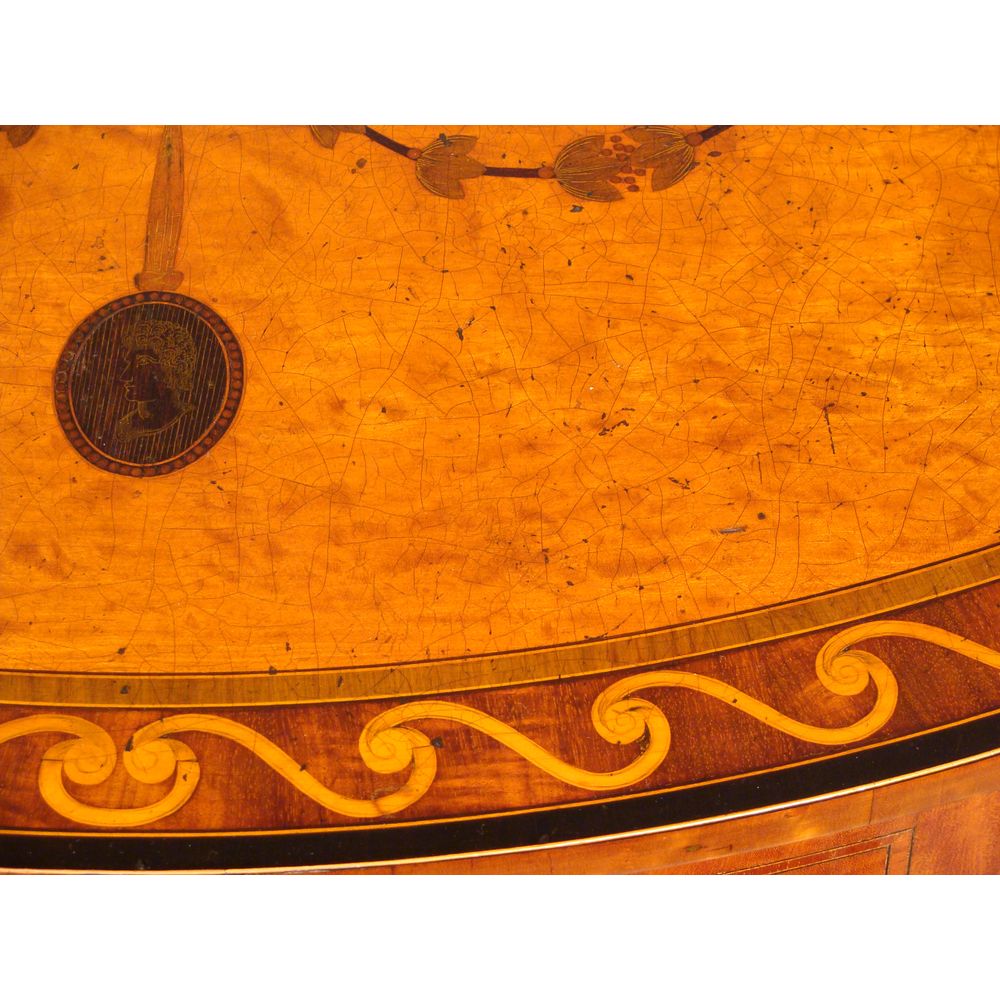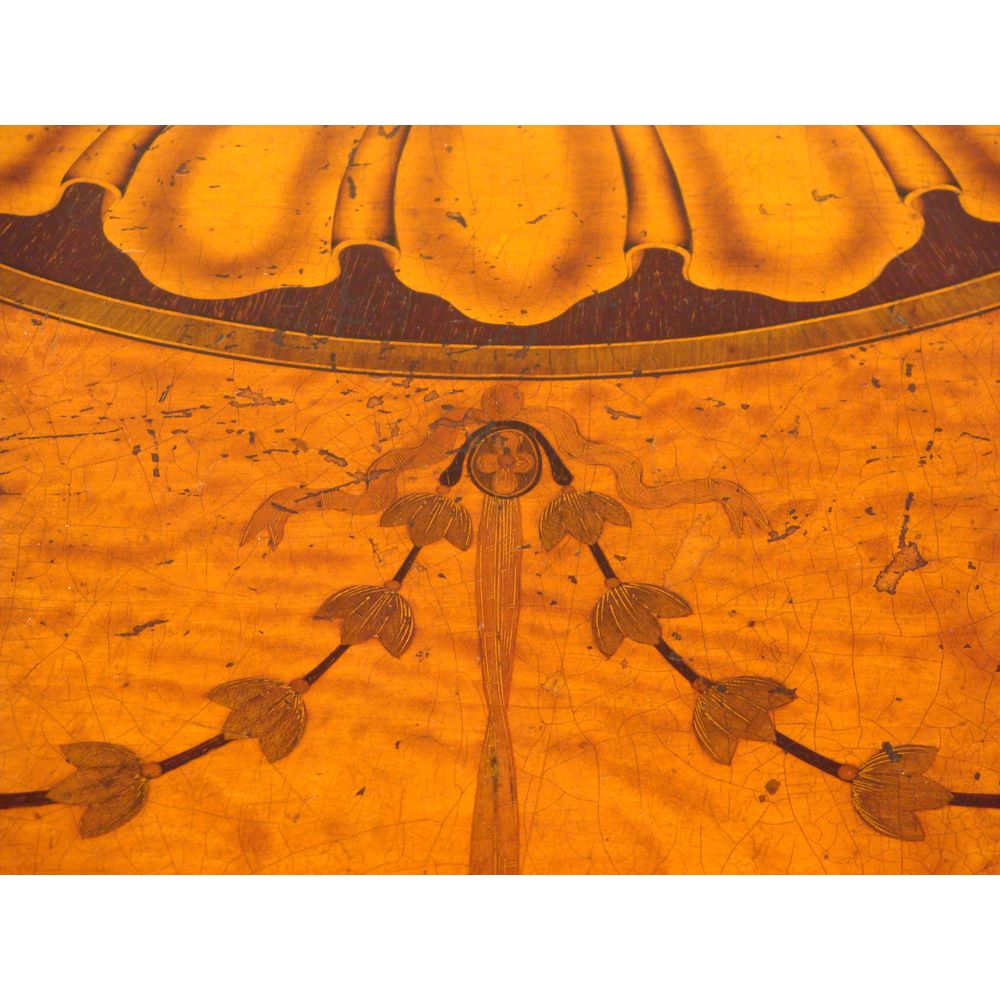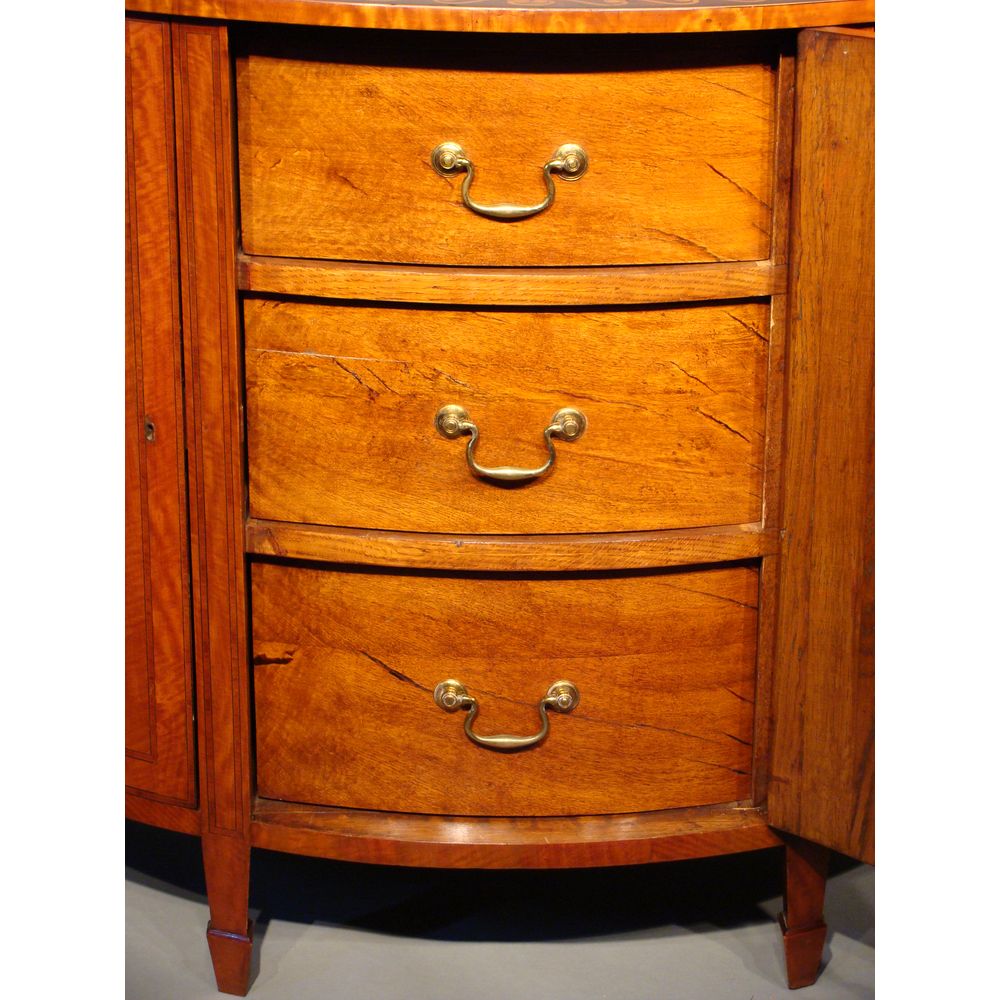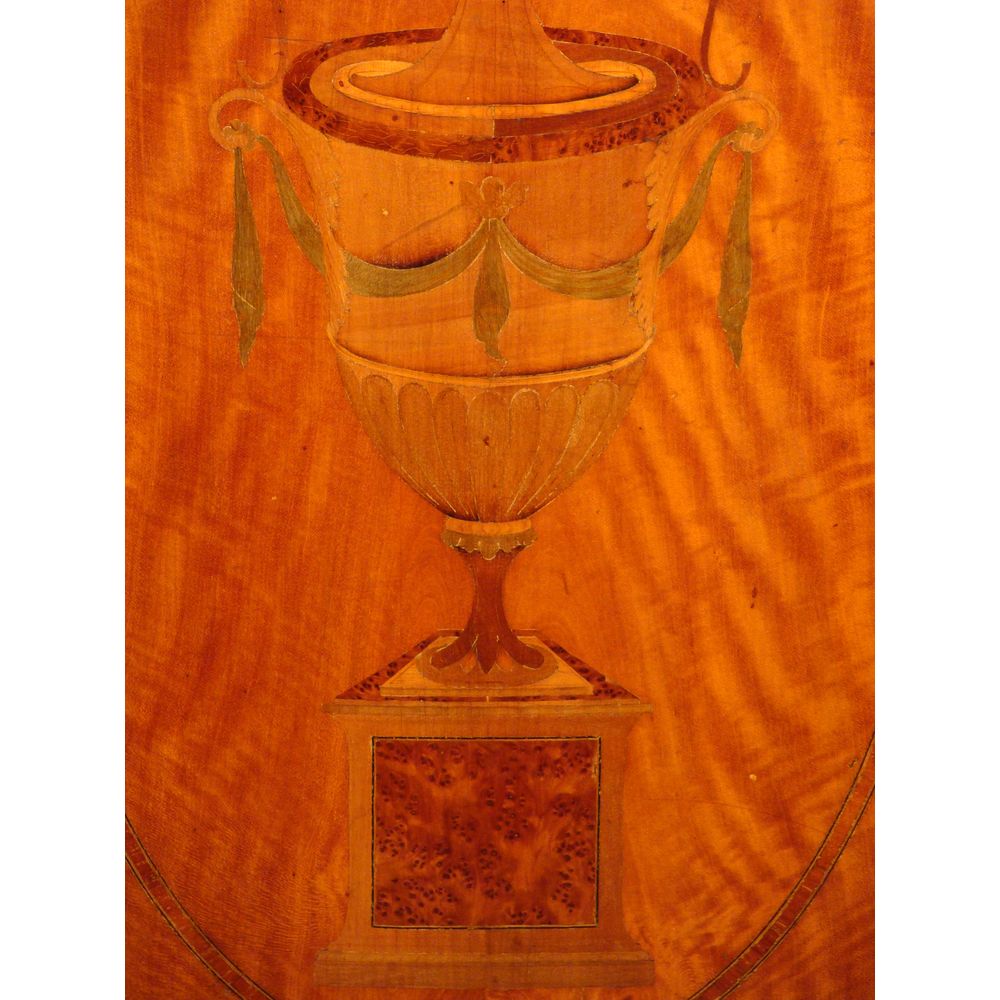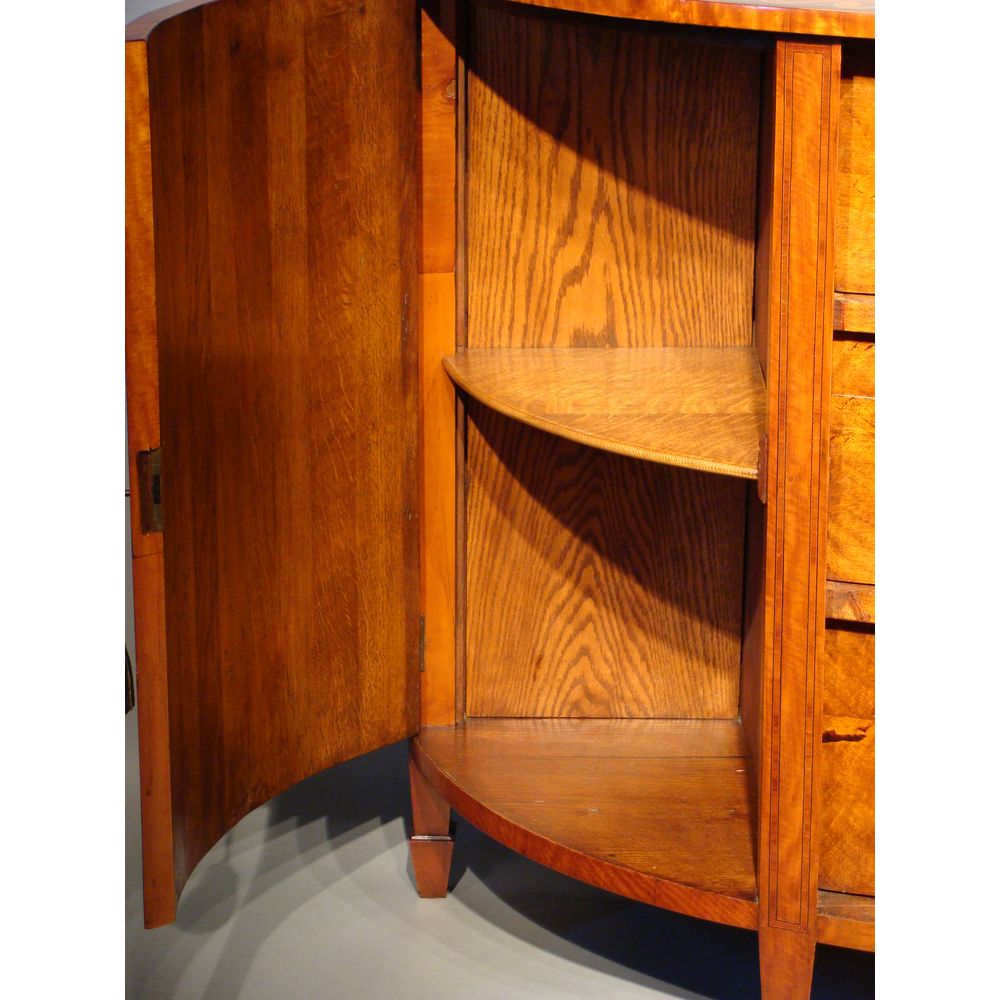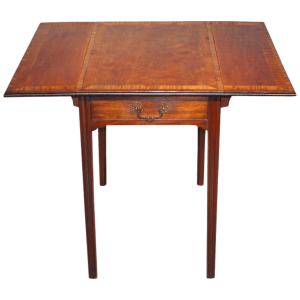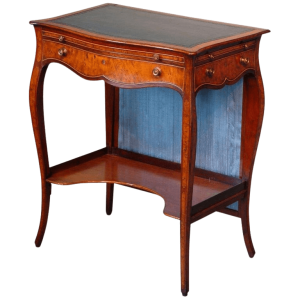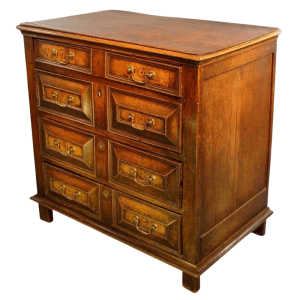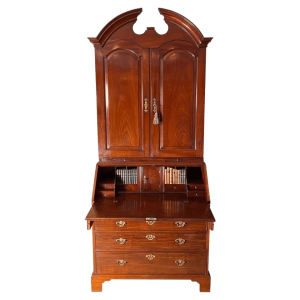Description
An English semi-elliptical, or demilune (half moon) inlaid satinwood commode of neoclassical form.
Of very good rich colour and patination.
The marquetry in kingwood, tulipwood, burr veneers and harewood. The fine quality top inlaid with a large conch shell, with radiating trailing marquetry of bell-flower ribands, within a Vitruvian scroll border.
This inlaid commode (or chest) contains three hinged cupboard doors each centred by oval panels inlaid with two-handled classical urns with drapery and flambeaux, on plinths set with burr veneers. The central cupboard revealing a bank of three oak-lined fitted drawers. The flanking cupboards with shelves. Raised on short square tapering legs and spade feet. 19th century, with 18th century elements.
All in excellent condition and of superb quality.
Satinwood and marquetry commodes of this design reflect some of the highest achievements in English cabinet-making.
Sometimes these antique commodes reveal the hand of two different master cabinet-makers, with tops differing from the bases.
Vis:
A fine George III satinwood and marquetry demilune commode attributed to Thomas Chippendale sold for £134,500 in Bonhams ‘Fine English Furniture & Works of Art Sale’, 19 Nov 2014.
A related pair of satinwood commodes are in the Royal collection, made in 1781 for George IV when he was Prince of Wales. XQC 1988, 95, & XQC 2004, GIII, 284.
See also Robert Adam, and Ince & Mayhew designs for similar satinwood marquetry commodes of the late 18th century.
References:
John Fowler, described by the Duchess of Devonshire as the ‘Prince of Decorators’ (p. 229), for a similar commode in the Hunting Room at Clandon Park, Surrey.
A similar top, inlaid with a large conch shell surrounded by swags, appears on a pair of card tables attributed to Thomas Chippendale, at Newby Hall. These tables are illustrated in Christopher Gilbert, The life and works of Thomas Chippendale (Bristol, 1978) p. 223, ill. 408.
Measures:
Height 34″
Width 44″
Depth 19″.



